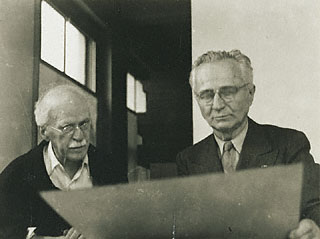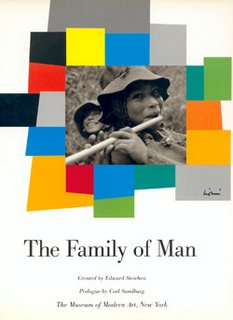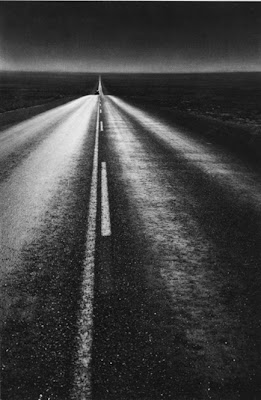Monday, December 17, 2007
Sunday, December 16, 2007
Monday afternoon
Matthew will be around to look at your work if you need advice before the holidays.
The studio will be open on Wednesday morning as usual.
Tuesday, December 11, 2007
Theory Test
Aperture: relative dimensions of f-stops (see below)
Shutter: different types and flash sync speed
ISO: grain and digital noise
Zone:
Grey card, zone scale, development, practical use
Light 1:
Visible spectrum + IR and UV
Colour temperature measurement
Correction filters
Light 2:
Incident, reflection, refraction
Image formation
Lenses:
Focal length
Primes and zooms
Faults, quality and price
Standard lenses for different formats
Format:
35mm
120
5x4
Digital sub-35mm frame magnification
All this information was covered in the Theory classes. You will find links to all these areas on the blog – use the ‘search’ facility at the top left corner.
It’s also covered comprehensively in Langford’s ‘Basic Photography’
Aperture dimensions

f = ‘focae’ and indicates a ratio 1:2, 1:5.6, 1:16 etc, which we shorten to f2, f5.6 and f16, etc.
1:2 means that the diameter of the aperture opening of a given lens is half of the focal length. For a 50mm lens to open up to f2, the diameter of the opening will need to be 25mm.
f4 on a 50mm lens requires the aperture to open as wide as 12.5mm
f4 on an 80mm lens requires the aperture to open as wide as 20mm
f4 on a 28mm lens requires the aperture to open as wide as 7mm
Because the actual diameter opening of f4 varies (12.5mm, 20mm and 7mm) depending on the focal length (50mm, 80mm and 28mm) in the examples above – f4 lets the same ‘brightness’ through, whatever the lens or format.
The same goes for all the other aperture settings – they’re universal.
New Media New Directions

Gillian Wearing - Masks (appearing as her entire family)
Jo Spence - personal photo-therapy
Cindy Sherman - untitled film stills
Nan Goldin - gritty, lo-fi images of the sub-culture
Alison Jackson - look-a-likes
If you like Jerry Uelsmann's work you can find it yourself. I'm not touching it.
Digital Closed Book Exam
The exam for Digital will take place at 10:30am on Monday the 17th December in the Lecture Theatre. This will consist of a 2 page paper with a variety of true/ false, multiple choice and simple answers.
The content will be based on what you have learned in class and what you should already be putting into practice using digital imaging.
Attendance is compulsory, and non attendance will result in a FAIL.
Monday, December 10, 2007
Stock Tuesday 11th
He WILL be available to talk to you about Stock issues on Wednesday 12th between 1.15 and 3.00pm.
Come in to see him if you need to.
Deadlines
You will need:
Timelapse image
Infra-red images (film and digital with control shots)
Soup transparency (your best frame)
Hotel food and drink transparencies x2
Weston print
City image (A3 size)
Autumn image
Evidence of research and evaluation of these 'constructed images' in your workbook
Theory Test paper - will take place on Monday 14th January at 1.15pm
In January there will be a short 'microscopy' project. Details when we return.
Monday, December 3, 2007
CTS Homework Images

 Citroen video on youtube at: http://www.youtube.com/watch?v=D5kD4O2ATJU
Citroen video on youtube at: http://www.youtube.com/watch?v=D5kD4O2ATJU 




Six Feet Under video on youtube at http://www.youtube.com/watch?v=BVonI5jp5dM
CTS - Homework for next week
Make notes
Paste in pictures
Do additional research
Try and identify which types of signs are in the ads
Bring your workbook in for group discussion next week
Image Allocation
Connelly Amanda - yellow pages
Currie Theo - six feet under
Footit Claire - car/ robot
Galloway Stuart -
King Howard – silence of the lambs
Jamieson Jennifer –
Macaulay Tertia - six feet under
Mason Nicholas - car/ robot
McMaster Jennifer - coke
Miller Ryan – silence of the lambs
Milligan Barry – yellow pages
Mooney Samantha – six feet under
Mroczkowska Ania – car/ robot
Munro Louise - coke
Osborne David - tesco
Sangster Natalie – silence of the lambs
Stelzer Kyle – yellow pages
Monday, November 26, 2007
Location Stock Hand-In
If you are shooting digital your work should be handed in on CD as high res JPEGs.
All photographs should be captioned in the IPTC envelope.
Please also hand in a printed out sheet of thumbnails.
If you are shooting film your pictures should be numbered and corresponding captions printed out and handed in too.
Remember that it is a minimum of 20 pictures.
Remember to record all your research in your workbook.
Tuesday, November 20, 2007
Calibration

Follow this link to Photobox.co.uk
This screen image should match the print I've given everyone - adjust your own monitor if it doesn't
Monday, November 19, 2007
Colour (not color)

Wikipedia on colour photography
That Russian bloke who invented colour photography in 1905
(The Scots invented everything)
William Eggleston's innovative colour work was promoted at MOMA in 1976 by John Szarkowski, keen to repeat his late sixties successes with Winogrand and Freidlander

William Eggleston - Masters of Photography link
William Eggleston.com
Influenced heavily by the 'epic' photography in The Family of Man exhibition in 1955, Irish businessman John Hinde (an ex Circus performer - a showman at heart) achieved great commercial success with extraordinary, saturated colour postcards - intended to match peoples' memory of their holiday - not the stark, austere post-war reality
John Hinde's Butlins postcards

Tony Ray Jones died from Leukaemia in 1972 at the age of 31 - which is why so few people have heard of him

Martin Parr blog (please read this)
Martin Parr audio interview
More Parr

New Brighton - the seaside town featured in Parr's 'The last resort'
Umberto Eco published a very important book of collected writings in 1985, called 'Travels in Hyper-reality'. Eco discusses the media and the messages they send - and we receive. He's particularly interested in the idea of 'simulated reality' - theme parks, Disneyland and the madness of Las Vegas. Please follow this link and read a synopsis of his thoughts.

Tuesday, November 13, 2007
Digital Imaging – Stationary Assignment Hand in.
For the people who did not hand in on time, you are looking at a fail unless this work is on my desk before this Friday. You work will be peer assessed by Group B next week
There will be a late hand in box on my desk, please sign your work it in and put it in the box. Please make sure everything is packaged up neatly and that all parts are attached to one another. Anything not packaged or not sign in, that goes missing is your responsibility.
Currently in the hall of shame, and running the risk of failing this unit we have:
Amanda Connolly
Ryan Miller
If you have had genuine extenuating circumstances that may prevented you completing the assignment, please inform me (on a Monday or Tuesday) or Matthew ASAP.
Please remember that attendance to the peer assessment exercise next Tuesday the 20th of November is compulsory for all students to attend.
Monday, November 12, 2007
Work in Progress Meeting - Monday 26th Nov
Hotel menu
Weston
Autumn
City
Infra-Red
Room 187, Monday 26th 1.15pm
Zone assignment deadline Monday 19th, Room 187 1.15pm
Ruler + practical application prints
Thursday, November 8, 2007
Tutorials: Monday 12th Nov - Room 187
2.30pm Louise Munro
2.45pm Amanda Connelly
3.00pm Natalie Sangster
3.15pm Anja Mroczkowska
Monday, November 5, 2007
CTS - Monday lecture programme
19th Nov: History 5 - Colour
26th Nov: Medium is the message
3rd Dec: History 6 - New directions
10th Dec: Presentation skills
17th Dec: No lecture
Friday, November 2, 2007
Stock - Parliament visit: Tues 6th Nov
Tuesday, October 30, 2007
Stieglitz or Steichen?

Alfred Stieglitz or Edward Steichen ?
Make your case with approx 1,000 words
Submission: Monday 12th November - 12 noon: lecture theatre 1
History part 3: Modernism & Propaganda

We covered a lot of ground in this lecture:
Documentary projects used the veracity of photography to publicise and inform:
Mass Observation - UK documentary project 1937 - 1953
Farm Security Admistration - massive US project
Florence Thomson - the "Migrant Mother"
Walker Evans - the Robbie Williams of the FSA
August Sander - Faces of the Twentieth Century (before the Nazis put him in prison)

Wikipedia on Propaganda
Nazi propaganda
Some images have become iconic:

Joe Rosenthal's picture at Iwo Jima
Associated Press counter accusations of fakery
Flags of our Fathers - Hollywood movie with a twist
Team America World Police
William Eugene Smith perhaps the World's greatest photographer

Minamata - Smith never fully recovered from being beaten up while trying to photograph the plight of a Japanese fishing vilage being poisoned by an untouchable and unaccountable chemical industry in the 1970s
The Family of Man exhibition in 1955 (curated by Edward Steichen)

Monday, October 29, 2007
Tuesday, October 23, 2007
Wednesday - Studio
Monday, October 22, 2007
Zone

John Blakemore describes each Zone like this:
Zone 0 Featureless black
Zone I Very dark black - no detail
Zone II First sense of separation in dark areas but no detail
Zone III Clear detail in darkest areas
Zone IV Dark hair, shadow in landscape
Zone V Mid-tone (18%) grey, tanned skin, grass or stone
Zone VI Caucasian skin
Zone VII Whites retaining full detail, skin in sunshine
Zone VIII Bright surfaces, whites with little texture left
Zone IX Glaring surfaces, highlights without detail

John doesn't bother with Zone 0 and neither will we
John's Zone book

The Zone system on Wikipedia
The Zone system explained by American nerds
You can take a reflected light reading off anything - if you can visualise what "Zone" it is, and adjust your exposure setting accordingly. I'll explain more soon.
For next Monday, please try to shoot the negatives for a Zone ruler: four stops over and four stops under a Zone V (grey card exposure) of an evenly illuminated, textured surface. You should have 9 frames of increasing density.
(Remember... it won't go wrong if you follow the instructions...)
Naked vs Nude

This is an enormous subject - worthy of a whole semester to itself. It's impossible to give a complete and balanced overview, but here are a few ideas and links. Please make some notes in your workbook.
Joel-Peter Witkin

Wikipedia on JPW
JPW gallery
8mm
Lois Greenfield

John Berger Notes on 'The Gaze' from "Ways of seeing"
Sally Mann

Laura Mulvey biography
BW information

Not to be confused with the much newer (and turbo-charged) T-MAX films 100, 400 and 3200 ISO
Here are some of the links to the areas I skirted over:
Silverprint - the best materials retailer (and genuine advice)
Ilford photo click on 'products'
Fuji pro - links to film info pdf + data guide
Kodak pro
Kodak B/W films
Kentmere - excellent papers
Fotospeed - excellent too + lith material specialist
Modern films are brilliant. T-Max 100 & 400 are amazing - but it gets expensive if you use T-Max developer everytime (which you should, or else there's not much point). So, age-old Tri-X in cheap D76 actually works really well if your follow this recipe...
Kodak Tri-X 400 - rated @ 200ISO
Dev 8 mins in D76 1dev+1water @ 20deg C
(Rating Tri-X at 200 ISO deliberately lets more light in, which saturates the silver halide crystals, reducing their size. Cutting the development to 8 mins - a little less than Kodak recommend - compensates for what would otherwise be overexposure)
Also:
Kodak T-Max 3200 - rated @ 1600ISO
Dev 9 mins in T-Max dev 1dev+4water @ 20deg C
(The same grain-calming technique works here too)
Friday, October 12, 2007
Soup in their eyes
Post a comment
Give someone the gift of feedback
Don't be shy... you know you want to
(See you all on Monday 22nd)



















